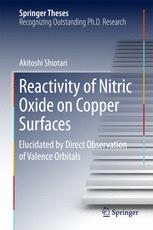

Most ebook files are in PDF format, so you can easily read them using various software such as Foxit Reader or directly on the Google Chrome browser.
Some ebook files are released by publishers in other formats such as .awz, .mobi, .epub, .fb2, etc. You may need to install specific software to read these formats on mobile/PC, such as Calibre.
Please read the tutorial at this link: https://ebookbell.com/faq
We offer FREE conversion to the popular formats you request; however, this may take some time. Therefore, right after payment, please email us, and we will try to provide the service as quickly as possible.
For some exceptional file formats or broken links (if any), please refrain from opening any disputes. Instead, email us first, and we will try to assist within a maximum of 6 hours.
EbookBell Team

4.8
84 reviewsThis book provides microscopic insights into chemical properties of NO on metal surfaces. NO/metal systems have been studied intensively to understand heterogeneous catalysis to detox exhaust NOx gas. The identification and componential analysis of various and mixed chemical species of NO adsorbed onto the surfaces have been significant challenges faced by conventional experimental techniques, such as vibrational spectroscopies. The author investigated "individual" NO molecules on Cu surfaces using low-temperature scanning tunneling microscopy (STM). STM not only provides information on the geometric, electronic, and vibrational properties at the single-molecule level; it is also able to manipulate molecules on surfaces to induce chemical reaction. Exploiting those techniques, the author chemically identified individual NO-related species on the surfaces and discovered new reaction processes for NO reduction, which provides microscopic insights into the catalytic mechanisms. The author also visualized wave functions of electrons in a valence orbital of NO and demonstrated that the wave functions are modified by the formation of covalent bonding or hydrogen bonding. This is, namely, "the visualization of quantum mechanics in real space," which is certainly worth reading. Furthermore, the book demonstrates that direct observation of valence orbitals helps to elucidate the reactivity of molecules adsorbed onto surfaces. This innovative approach to studying molecular properties will contribute to further development of STM and its related methods.